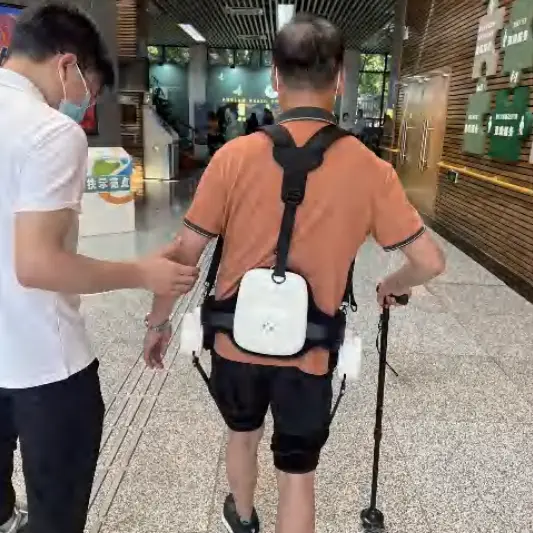Multiple sclerosis (MS) patients often face mobility challenges. Traditional therapies can feel slow and exhausting. Robotic exoskeletons are now offering a breakthrough solution for rebuilding strength and independence. Robotic exoskeletons use motorized supports to assist movement, enabling MS patients to perform intensive rehabilitation exercises safely while collecting data to personalize treatment plans. While physical therapy remains crucial, robotic technology addresses key limitations. Let’s explore four critical ways these robotic rehabilitation devices are reshaping MS rehabilitation outcomes.

Walking difficulties plague 75% of MS patients within 15 years of diagnosis. Weakness and fatigue frequently cut therapy sessions short before meaningful progress occurs. An exoskeleton for ms patients provides adjustable leg support during treadmill or over-ground walking, allowing longer practice sessions that rebuild neural pathways controlling stepping patterns and weight transfer.
| Traditional Therapy | Exoskeleton-Assisted Therapy |
|---|---|
| 20-30 minute sessions | 45-60 minute sessions |
| Manual corrections | Real-time gait analytics |
| Gradual pace adjustments | Instant speed modulation |
33% longer stride length
25% faster walking speed
40% reduced step asymmetry The extended practice time matters. Repeated, precise movements help retrain the brain to compensate for damaged nerves. Sensors detect muscle activation patterns, helping therapists target weak areas.
Fatigue affects 80% of MS patients, often limiting exercise intensity. However, high repetitions drive neuroplasticity – the brain’s ability to rewire itself. Exoskeletons offset muscle effort through powered joints, letting patients complete high-repetition training cycles without exhausting their limited energy reserves.
Traditional Approach
3 sets of 10 leg presses
Rest breaks every 5 minutes
Total reps: 30 Exoskeleton-Assisted
10 sets of 15 assisted squats
Continuous motion with load support
Total reps: 150 Higher repetition counts accelerate skill retention. The device adjusts support levels as endurance improves – like a “copilot” that does less as the patient does more. One trial reported 68% greater strength gains versus standard methods.
Falls are a major concern, with 50% of MS patients experiencing them yearly. Fear of falling often reduces activity, worsening physical decline. Exoskeletons detect imbalance through gyroscopes and pressure sensors, delivering instant corrective forces to prevent falls while strengthening core stabilizers through resisted motions.
1. Static Stability
Maintain upright posture on uneven surfaces
Exo provides subtle nudges to engage muscles
2. Dynamic Challenges
Shift weight side-to-side during tasks
Resistance levels increase as control improves
3. Functional Simulations
Practice standing up from chairs
Adaptive support prevents collapses Patients gain 22% better balance scores in 6 weeks. The safety net encourages risk-taking necessary for progress.
Depression affects 50% of MS patients. Physical limitations often lead to social isolation and reduced mental stimulation. Successful exoskeleton sessions rebuild confidence through achievable challenges, while the cognitive effort of coordinating with the device improves focus and problem-solving skills.
41% reduction in depression scores
29% improvement in processing speed tests
87% report renewed motivation for daily activities The technology turns rehabilitation into an engaging video-game-like experience with real-time performance metrics and rewards.
Robotic exoskeletons empower MS patients to regain mobility through longer, safer, and more effective training – transforming rehabilitation from maintenance to meaningful recovery.